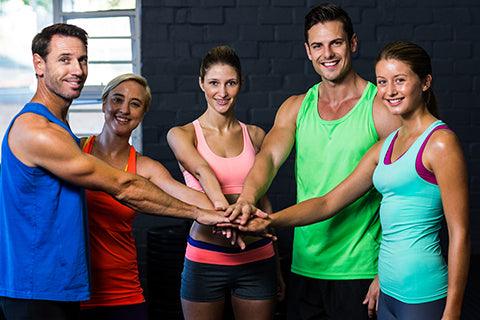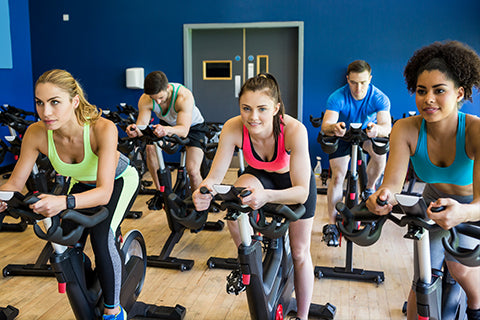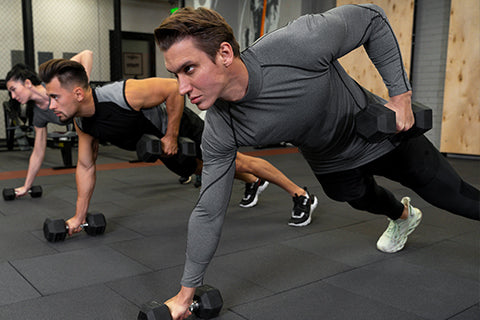April 4, 2024
Madhura Mohan
The 5 Pillars Of Physical Fitness You Need To Master
H
ave you ever considered physical fitness more than just appearance and feeling great? Is physical fitness solely about weightlifting or marathon running? Have you ever wondered why you can’t quite achieve your fitness objectives? You find it difficult to jog, struggle with lifting weights, and experience constant stiffness when you attempt to bend. In reality, physical fitness is a complex puzzle with various components that contribute to your overall physical well-being. Only when you assemble all the pieces can you envision a complete state of physical fitness.
Now, ask yourself these questions:
Are you able to maintain a steady pace for a prolonged period, or do you quickly become out of breath? This speaks to your cardiovascular endurance.
Can you lift heavy weights or climb stairs without feeling fatigued? This reflects your muscle strength.
Are you able to sustain muscular contractions through reps? This speaks to your muscular endurance.
Can you effortlessly touch your toes or twist your torso with ease? This reveals your body's flexibility.
Do you have a healthy balance of muscle and fat? This is about your body composition.
The domain of fitness goes beyond a simple exercise regimen or superficial appearance. Physical fitness encompasses the complex network of these five crucial elements that shape your overall physical fitness.
In this blog, we’ll explore how these components intertwine to make up your overall physical fitness…
1. CARDIOVASCULAR ENDURANCE
Cardiovascular endurance is the first pillar of physical fitness, encompassing the heart and lungs’ ability to supply oxygen to the muscles during prolonged physical activity. The better your cardio endurance, the longer you can sustain activities that elevate your heart rate without experiencing fatigue. This translates into enhanced stamina, quicker recovery time, and a stronger overall physique.
How to build cardiovascular endurance? Building cardiovascular endurance involves engaging in aerobic exercises that elevate heart rate and breathing over an extended duration. Engaging in activities like Zumba, performing jumping jacks, cycling, swimming, dancing, and walking can effectively build cardiovascular endurance. Aim for at least 150 minutes of moderate-intensity aerobic exercise each week for optimal cardio endurance.
2. MUSCULAR STRENGTH
This particular aspect of physical fitness serves as the basis for a strong and capable physique. It enhances the definition and tone of muscles. Muscular strength is determined by the ability of muscles to exert force against resistance in a single attempt. This directly correlates to the amount of weight one can lift, push, pull, or squat. Developing muscular strength not only improves physical performance but also assists in daily activities and reduces the likelihood of injury.
How to build muscular strength? To enhance muscular strength, it is essential to engage in resistance training. This can be achieved through weight training, resistance bands, or bodyweight exercises such as squats, lunges or push-ups. Incorporating strength training exercises into your weekly routine, focusing on major muscle groups, at least twice a week will yield optimal results. By consistently engaging in resistance training exercises, progressively increasing the challenge, and maintaining proper form, you can adequately build muscular strength.
3. MUSCULAR ENDURANCE
Muscular endurance refers to the ability to sustain repeated muscle contractions without experiencing fatigue over an extended period. Developing good muscular endurance is like having a durable battery that enables you to perform activities requiring sustained effort.
How to achieve muscular endurance? To enhance muscular endurance, it is recommended to engage in exercises using light weights and high repetitions, prioritizing endurance over strength. Additionally, holding a plank position for a minute, performing bicep curls for extended reps without needing a break, doing push-ups, planks, and incorporating HIIT workouts are beneficial. Aim for 2-3 sets of 12-15 repetitions per exercise to promote endurance and resilience in your muscles. Aim for 2-3 endurance training sessions per week, focusing on different muscle groups.
4. BODY FLEXIBILITY
This aspect of physical fitness focuses on enhancing the overall range of motion in your joints and the flexibility of your muscles, enabling comfortable and unrestricted movement. Having good flexibility brings about various benefits such as improved posture, reduced muscle pain, enhanced coordination, and better athletic performance.
How to build body flexibility? To develop body flexibility, it is recommended to include dynamic stretches before exercising, engage in activities like yoga, pilates, and utilize a foam roller to release muscle tension and enhance flexibility. It is important to incorporate stretches for different muscle groups including hamstrings, quads, calves, back, shoulders, chest and hips. Aim for 2-3 stretching sessions per week, holding each stretch for 15-30 seconds and repeating 2-3 times. By consistently integrating stretching exercises into your routine, you can significantly improve body flexibility and posture.
5. BODY COMPOSITION
This component of fitness considers not only your body weight but also how that weight is distributed across the body. It encompasses the ratios of various tissues that constitute your body weight: muscle, fat, bone and water. An ideal body composition generally consists of a higher proportion of muscle mass and a lower proportion of body fat. This results in an enhanced metabolism, increased strength, endurance, and improved physical appearance.
How to achieve a healthy body composition? To develop a healthy body composition, focus on consuming protein for muscle development and repair, healthy fats for satiety, and complex carbs for sustained energy. Strive for a slight calorie deficit to promote fat loss while ensuring an adequate intake of nutrients for muscle growth. Additionally, include strength training workouts into your routine to boost metabolism, build muscle, and reduce fat.
So, these are the 5 pillars of physical fitness that you should keep in mind. It is important to incorporate all these aspects into your fitness routine for a well-rounded approach…
Ready to unlock your full fitness potential? Stay tuned to asitisnutrition.com/blogs where we’ll be giving you the knowledge to become the fittest, healthiest version of yourself…
 Follow our Instagram page for the latest updates: badalkhudko
Follow our Instagram page for the latest updates: badalkhudko







 Follow our Instagram page for the latest updates: badalkhudko
Follow our Instagram page for the latest updates: badalkhudko




Comments
Leave a comment